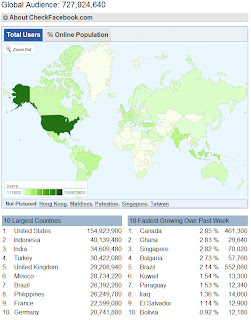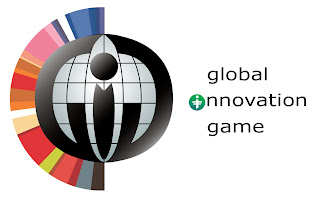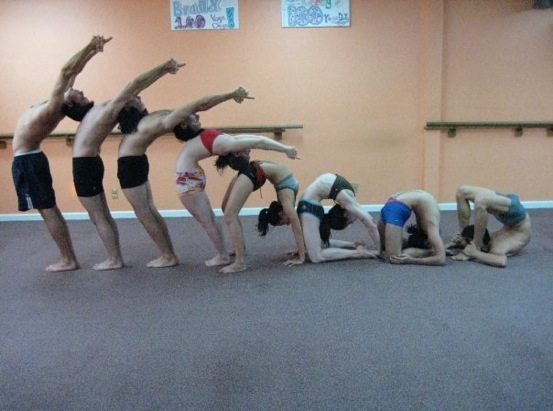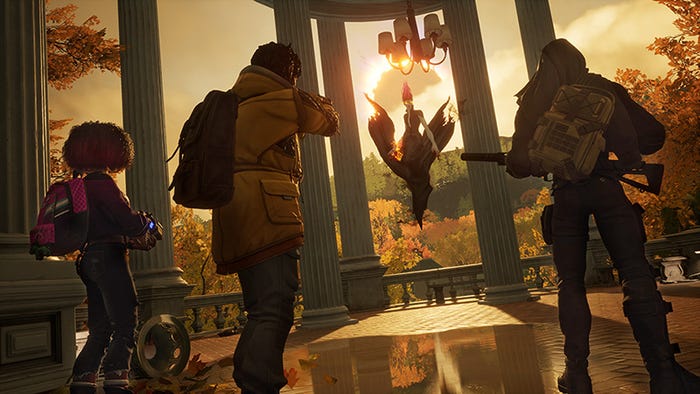Effective Open Innovation in Social Games
I would like to share some of what we have learned developing a new platform for social games that encourages open innovation. In so doing I will discuss how social games can provide an effective platform for crowd-sourcing ideas & the challenges faced.

Effective Open Innovation in Social Games
5 Hurdles to Jump When Implementing a Social Game Strategy
with Crowdsourced Innovation
by Fred Skoler
Co-founder, President
Global Mind Games
http://www.linkedin.com/in/fredskoler
Need for Purposeful Innovation
As an interactive games business executive with two decades of award winning creative design and production experience I value purposeful innovation. Innovation in hardware, software and design is what keeps my audience coming back for more. Over the years my passion for finding assembly-line efficiencies for the creative development of games and social media has led me down many paths.
Social Games for Open Innovation
This past year, my partners and I at Global Mind Games™ (GMG) have focused on developing a new platform for social games that encourages open innovation. I would like to share some of what we have discovered along the way. In so doing I will discuss how social games can provide an effective platform for open innovation and some of hurdles we face as we attempt to build an audience.
Defining Open Innovation and Social Games
Since you are reading this, you probably don’t need me to explain any of the terms associated with Open Innovation. But just in case, please consider the following 7 definitions:
1. Innovation: I have come to define innovation as the introduction of a new idea or approach that can solve a problem. For me, at its best, innovation provides a practical solution that can be turned into a significant function, process or product.
2. Purposeful Innovation: Innovation leading to a specific, useful result. I’ve observed that purposeful innovation is generally inspired by a specific challenge defined with limits that works to focus ideation on the task of producing an actionable outcome.
3. Closed Innovation: I think of closed innovation as when an internal team of experts works to discover an innovative solution without external interference. This closed group of thinkers is often intellectually very capable but, in my opinion, can often be myopic and miss broader opportunity without the friction of an outside perspective.
4. Open Innovation: Open innovation is when a group or community collectively works on a problem to introduce a new idea or approach that can solve a problem. It becomes most effective when the structure and process of assigning idea value is flexible enough to take issues of context, behavior and cultural meaning into account.
5. SBOF – soft bubble of friends: By design, most social networks share information with users that will be frictionless. We see the stuff and people that we should like based on our online social habits. I use this acronym to refer to the community that social network algorithms use to determine what you will like and who you want to be friends with.
6. Friction as Catalyst: I have seen that the friction that comes from introducing diversity of thought works as the perfect catalyst to purposeful innovation.
7. Social Games: Social games are interactive and played online with “friends” and typically work on social networks likeFacebook, My Space or Google+. Social games require voluntary participation, have rules, goals and are most often experienced as a form of escapist entertainment. Being online, and sitting atop established social networks, social games have the advantage of accessing large communities and often enable players to easily share elements of their experience with network “friends” whether those people play that game or not. In these games social & behavioral interaction often drives achievement without declaring a traditional ‘winner’. From social games analytics we can learn a lot about our players and how they interact with ideas.
Facebook’s Global Audience
Worldwide, people are adopting social networks to communicate with friends, business associates, and customers at an amazing pace. Facebook alone has well over 750 million users, 70% of which are outside the US, with the average user connected to over 80 community groups, events and 130 friends.
Facebook User Stats
Source: checkfacebook.com
Social Limits
Social networks are used by a diverse online community but these networks are often designed to provide users with a frictionless portal to online content. Content is served by algorithms that “think” the user will “like” something based on previous interactions. To break out of, what I refer to as, the “soft bubble of friends (SBOF)” and to be exposed to the wealth of experience and perspective available on social networks, users generally have to interact through add-on applications. In a September 2010 press meeting, Facebook CEO Mark Zuckerberg confirmed that 40% of its user-base was using the site for social gaming apps.
Social Gaming Growth
It can be said that social games, growing to $4 billion by 2015 (according to analyst firm Business Insights), is the social network’s most popular type of application.

Social Gaming Infographic
Source: Getsatisfaction.com
Social Games for Crowdsourcing
It is my belief that a social game can provide everything needed to effectively crowdsource ideas. An open innovation game can sit on a social network, pose actionable challenges, provide incentives to motivate participation; it can support creativity and dynamically assign value to ideas based on user behavior and context. As added benefit, it has been shown that when a company can immerse its message in a social game that it can be an effective method for expanding consumer base, nurturing positive associations through the culture of the game, it develops good will, and creates loyal customers (JIS Study - Social software: fun and games, or business tools).
What GMG Develops
At Global Mind Games™ (GMG) we are creating a “gamified” open innovation app on the Facebook Platform called Global Innovation Game™ or GiG™ (http://apps.facebook.com/globalinnovationgame). GiG focuses community driven innovation on topical challenges and tracks how the solutions are valued by real people around the world. To complete the cycle of innovation and to see how ideas can be put into practice GiG also introduces an element of gameplay that links real-world action to challenges called Promises. GiG’s unique feature set, along with its proprietary methods for assigning value to ideas in a game environment, creates a novel opportunity for open innovation efforts and testing how ideas resonate in the global market.

Global Mind Games

Global Innovation Game Logo
Source: GiG (Global Innovation Game)
5 Hurdles to Jump When Implementing a Social Game Strategy
for Crowdsourced Innovation
Implementing a social game strategy can be as simple as posting a guest challenge in GiG or as complex as setting out to develop your own game from scratch. For each of these approaches there are many considerations.
At GMG, our experience in game development , global media knowledge and technology expertise put us in a great position to be successful in our pursuits.
Developing GiG taught me the following five rules for meaningful social games development:
Know where your target audience hangs out and go there to get them.
We initially developed GiG for the Facebook Platform because FB has the largest international demographic and we could leverage many of its built-in capabilities for viral engagement.
We have to face it. Facebook is massive, but people get on Facebook to escape the real-world and enjoy the easy breezy SBOF. It has been my experience that people on Facebook do not naturally or organically gravitate towards games with “meaningful content.”
I believe that some of this behavior will change, and especially with efforts like GiG leading the way, but we all associate certain types of behavior with specific places. My 5 year old son recognizes that pre-school requires he listen and behave. There, he’s an angel. At home…not so much.
See Food - 5 YO
Source: 5YO - Yeah, I ate it! Photo by @dadmeetup
The same is true for social networks like Facebook. The world’s largest publisher of social games, Zynga has become synonymous with what players expect from a “social game” on Facebook. Zynga spends millions of dollars to market each of their games and perpetuate the player’s expectation that games on FB will look like FarmVille and other leading games of this genre. Typing meaningful thoughts is not necessary a requirement when playing Zynga games. This is no surprise.
Without millions of dollars to compete in marketing, our solution to corralling players has been to develop strategic partnerships with large communities that gather in the pursuit of new ideas, innovation and business opportunities. Groups like Global Entrepreneurship Weekand Future Problem Solving Program Internationalprovide a base of tens of millions predisposed to find GiG engaging. We provide a platform for these groups and their content, while they help direct players into GiG.
We developed GiG as text based to make it available to low end phones. We are currently expanding our reach by creating a browser based version that will not require a specific social network. We are also preparing smartphone applications to expand market and gameplay potential with location based features and more.
Know what you hope to achieve and how long can you commit.
It is important to understand what you want to achieve from your efforts in social media and specifically from a social game. ROI is not always immediately apparent. Goodwill and association with positive action can often lead to customer loyalty and long term value. GiG delivers plenty of this.
Social games development requires ongoing production and maintenance to stay in synch with players, partners and the business community. Social games provide an exceptional feedback loop for refining content. It is why we felt that the gamification of a crowdsourcing platform would prove to be valuable. We also planned for a longer commitment than a social game created solely for entertainment.
GMG’s overall goal is to provide a social game platform that others can leverage without much effort. We make it easy for businesses, communities, brands and groups to reap the benefits of open innovation in social games.
Social games platforms need to be flexible. To best meet the goals of GMG the platform had to be equally capable of providing an engaging experience for a large and small user base. We had developed a solid architecture for GiG and it enabled us to adapt our algorithms to meet the needs of large and small groups of players.

Stay Flexible to Remain Relevant
Source: Evolution of a Backbend, photo and concept: Mary Jarvis
Today, GiG provides a platform that curates ideas, assigns value and gives players an outlet to showcase real-world achievement. We continue to partner with communities to drive an insightful audience towards meaningful challenges. GiG’s audience has grown to represent 19 countries with topics as varied as the environment, policy, economics, and health inspiring over 1,000 solutions.
Do you want to develop your own platform and what will it take to implement?
Take the time to build your game on something that will support your vision for the future. Building a social game that will achieve your open innovation goals requires a lot of expertise. Make sure that you have all of the necessary resources lined up or you may end up with no more than a very expensive social experiment.
GiG boasts hundreds of challenges, on dozens of topics, from worldwide experts. We find it important that we reach out to the community on a daily basis and respond proactively to their requests. It is important to have a production path that can be replicated and has assembly line efficiency built in.
Most recently we implemented a new feature called “Promises” at the request of our community. This capability enables players to showcase real-world action inspired by the GiG challenges. One developer over several weeks was able to take this project from concept to the live game because of our flexible architecture.
Can you commit the resources necessary to keep the experience fresh for the playing community?
We have found that with practice we can develop new challenges readily and have been successful in guiding our partners to do the same. Because the GiG platform relies heavily on user generated content and links to traditional media sources our overhead stays lower than traditional social games. GiG’s content expands in real-time as an effect of the game dynamic and community involvement.
Depending on the style of gameplay you may generate server costs that exceed your expectations. To keep costs low, flashy graphics are not always the best approach.
If you choose a design style that is text based this requirement will always be within the realm of reason.
Would you benefit from building a global community of innovative thinkers?
Developing and marketing a game can be an expensive undertaking. There are many hurdles associated with the implementation of play balance, incentive, user interface, ongoing support, crowded market space, and the very important behind the scenes data structure. Pairing social games and topical, thought provoking content is a new approach to open innovation and to games. Development and implementation should be led by experienced game developers and designers.
A thought provoking game like GiG provides a fun way to engage your community without being silly. A game can be designed to provide benefits of open innovation, it can be used to focus messages to better resonate with your target community, it can help find social ambassadors for your products, identify individuals to form focus groups and lead to solutions that truly matter to your customers.
At GMG we are innovating to expand the opportunity for social games to provide value to groups interested in open innovation and wanting a presence in games to broaden their social portfolio.
There is no time like the present to get started with an open innovation initiative in social games. Once you have selected your innovation platform, the trick is in finding your audience or directing them to the experience. There, they need to be incentivized to return through fresh content and rewards they find compelling.
I welcome your thoughts and questions as we expand our proprietary App4Good game engine and look forward to providing a fun and effective way to rally great ideas and GiG It!
Read more about:
BlogsAbout the Author(s)
You May Also Like













